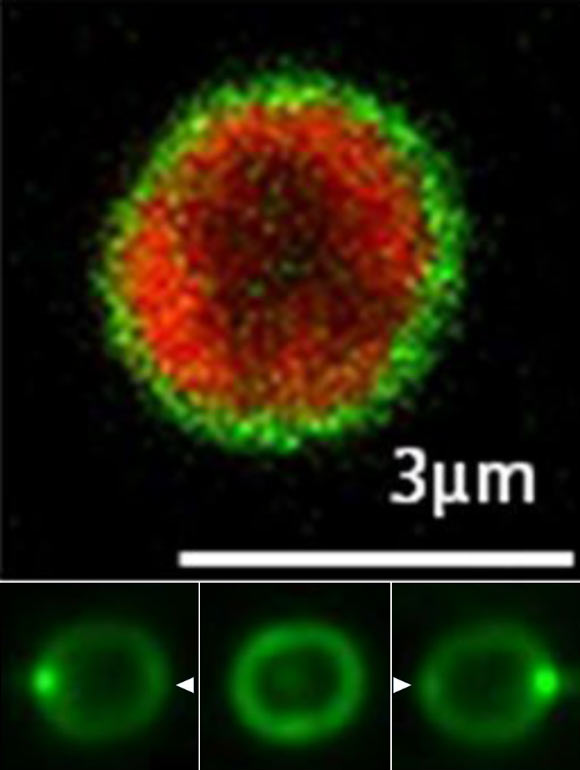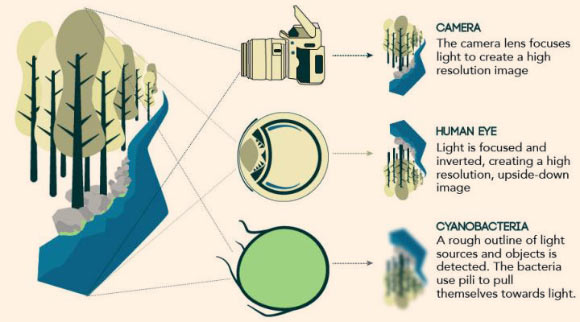According to a study published in the journal eLife, cyanobacteria cells act as spherical microlenses, allowing the cell to see a light source and move towards it.

Top: two-channel confocal micrograph of Synechocystis. Bottom: single Synechocystis cell illuminated from the right, above and left (arrows indicate illumination direction). Image credit: Nils Schuergers et al, doi: 10.7554/eLife.12620.
Cyanobacteria are found throughout the world in terrestrial, freshwater and marine habitats. They are sometimes considered algae, but they are actually bacteria.
In the oceans, they are among the world’s most important oxygen producers and carbon dioxide consumers.
The species of cyanobacteria used in the current study, Synechocystis, is a spherical single-celled microorganism that measures about three thousandths of a millimeter across. It is found naturally in freshwater lakes and rivers.
Because Synechocystis needs sunlight to produce energy, it is important for it to find places where the light is neither too weak nor too strong.
Unlike some bacteria, Synechocystis can’t swim, but it can crawl across surfaces. It uses this ability to move to places where the light conditions are better.
It was already known that Synechocystis cells move towards a light source that is shone at them from one side, which implies that the cyanobacteria can ‘see’ where the light is.

Synechocystis bacteria can directly and accurately sense the position of a light source: a cell of Synechocystis is about half a billion times smaller than the human eye; as with the retina in the human eye, the image on the rear of the cell will be upside down; but its resolution will be much lower, so only a blurred outline of any object can be perceived. Image credit: Nils Schuergers et al, doi: 10.7554/eLife.12620.
The current study reveals that the bacterial cells are able to do this because the cell body acts like a lens. As light hits the spherical surface, it refracts into a point on the other side of the cell. This triggers movement by the cell away from the focused spot.
Within minutes, the bacteria grow tiny tentacle-like structures called pili that reach out towards the light source. As they attach to the surface that they’re on, they retract and pull the bacteria along.
“The fact that bacteria respond to light is one of the oldest scientific observations of their behavior,” said Prof. Conrad Mullineaux from the Queen Mary University of London, who is the corresponding author on the study.
“Our observation that bacteria are optical objects is pretty obvious with hindsight, but we never thought of it until we saw it,” he said.
“And no one else noticed it before either, despite the fact that scientists have been looking at bacteria under microscopes for the last 340 years.”
_____
Nils Schuergers et al. 2016. Cyanobacteria use micro-optics to sense light direction. eLife 5: e12620; doi: 10.7554/eLife.12620







